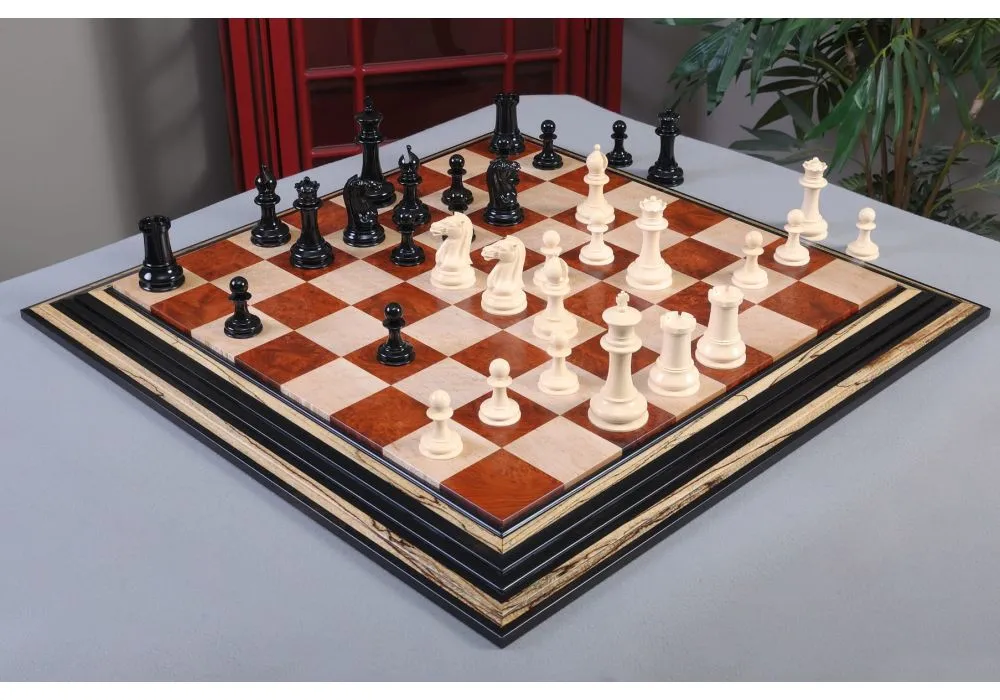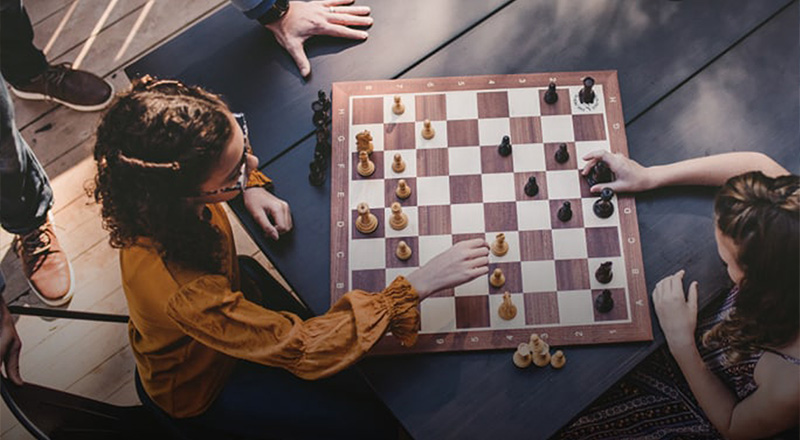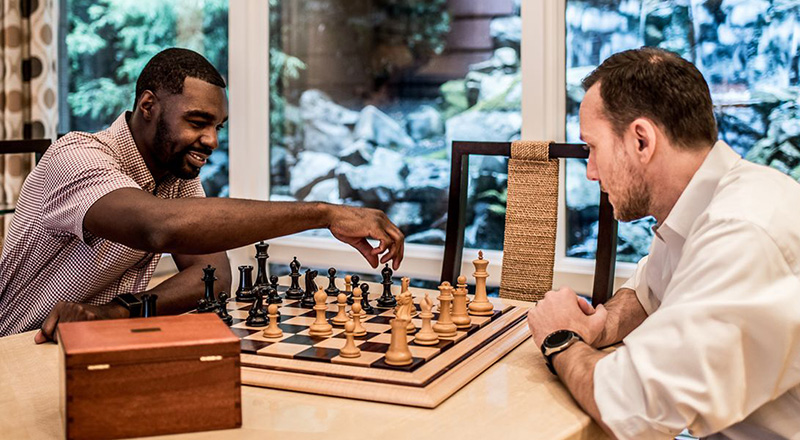"Crafted from 40,000-year old Woolly Mammoth Ivory, they capture the exquisite design and proportions of the original Staunton pattern Chess set, registered by Nathaniel Cooke and produced by Jaques of London in 1849."
To pamper you, The House of Staunton is proud to offer the Mammoth Ivory & Selene Series Luxury Chess set. This heirloom quality Chess set features a 4.4" King with a 2.0"diameter base. The Chess pieces are hand carved by our master artisans and crafted out of the finest materials. Because of the natural weight of Mammoth Ivory, the pieces have an excellent feel that does not require any artificial weighting. The opposing army is also crafted from Mammoth Ivory.
The Chessmen are new and each set consists of 34 Chessmen, including four Queens, a standard that was introduced by The House of Staunton in 1993.
The Chess Set comes with a personalized Certificate of Authenticity and an original manufacturer's label indicating the production number, with an adhesive backing that would allow it to be affixed to the underside of a Chess box.
1849 Selene Imperial Staunton Chessmen
This is an exact reproduction of the original Club-Size Nathaniel Cooke 1849 Staunton Chessmen. The unique design feature of this set of chess pieces is the Knight, which is an exact replica of the horse pulling Selene’s Chariot taken from the East Pediment of the Greek Parthenon. This particular sculpture was the inspiration for the Knights used in the original Staunton design. This is a full Club-size set, featuring a 4.4″ King with a 2.0″ diameter base. The chessmen are crafted from the finest grade of Mammoth tusk. This set of chessmen includes an extra pair of Queens to
assist during Pawn Promotion, a feature pioneered by House of Staunton in 1993.
The Chess Set comes with a personalized Certificate of Authenticity and an original manufacturer's label indicating the production number, with an adhesive backing that would allow it to be affixed to the underside of a Chess box.
Some Background
The Staunton pattern chess pieces are today the World standard for serious and casual play. The relatively low production cost brought chess to the masses and did much to popularize the game. In 1849, this new design was revolutionary. It was simple and elegant. The original design looks as modern today as it did upon its introduction over 166 years ago. However, this upstart met with some resistance from the established Chess Clubs and many players. Here are some insights into the ideas behind this new paradigm.
The design of the Staunton Chessmen was registered by Nathaniel Cooke in March of 1849. Sole authorization to produce the chessmen was given to the Firm of John Jaques of London.
Inspiration for the Design of the Staunton Knights was derived from the Elgin Marbles, whose visages of the noble steeds graced the East Pediment of the Greek Parthenon which stood atop
the Acropolis. The distinctive, finely detailed Knight design drew heavily upon the horse seen pulling the Moon Goddess Selene as its inspiration. This Knight is the hallmark of the Staunton
design. Over time, whether due to the demands of the market to mass produce chess sets cheaply, lack of carving skill, or simply ignorance of their true design origins, Knights in contemporary Staunton chess sets are often artistically challenged and a far cry from the original design intent.
The Staunton Bishop’s wide, open-mitered headpiece was an abstract representation of a flame (tongues of fire), the ecclesiastical representation for Wisdom, which in Christianity represents enlightenment imparted by the Holy Spirit. Contemporary Bishop designs have lost that original religious connection. The Rook design is self-evident. The Kings and Queens are represented by
their respective headpieces resting plush pillows sitting atop gracefully curved columns. The Pawn is said to represent the Freemason’s Square and Compass, a rather obscure reference and
one which is open to some debate.
The Elgin Marbles
The Parthenon Marbles, also known as the Elgin Marbles, is a collection of classical Greek marble sculptures (mostly by Phidias and his assistants), inscriptions and architectural members that originally were part of the Parthenon and other buildings on the Acropolis of Athens. The fascinating story behind these marble sculptures is rooted in Greek Mythology. On the far-right corner of the East Pediment there is a marble sculpture of the head of a horse spilling over the beam and known as the Head of the Horse of Selene’s Chariot.
The horse was part of a larger ensemble of horses pulling a chariot. The chariot represented the moon (Selene) which the horses, now exhausted, were pulling into the sea after racing across the night sky. The left corner of the pediment contained a second set of horses and chariot representing the sun rising out of the sea. The sculptor has masterfully captured the weariness of the horse, with its flaring nostrils, bulging eyes, and drooping jaw.
There is more to this captivating story. Thomas Bruce, the 7th Earl of Elgin, obtained a controversial permit from the Ottoman authorities to remove pieces of the Friezes from the Parthenon
while serving as the British ambassador to the Ottoman Empire from 1799 to 1803. From 1801 to 1812, Elgin’s agents removed about half of the surviving sculptures of the Parthenon as well
as some other choice sculptures. The Marbles were then transported by sea to Britain. Greece has demanded that the Marbles be returned to their proper place and critics have compared Elgin’s actions to vandalism or looting.





